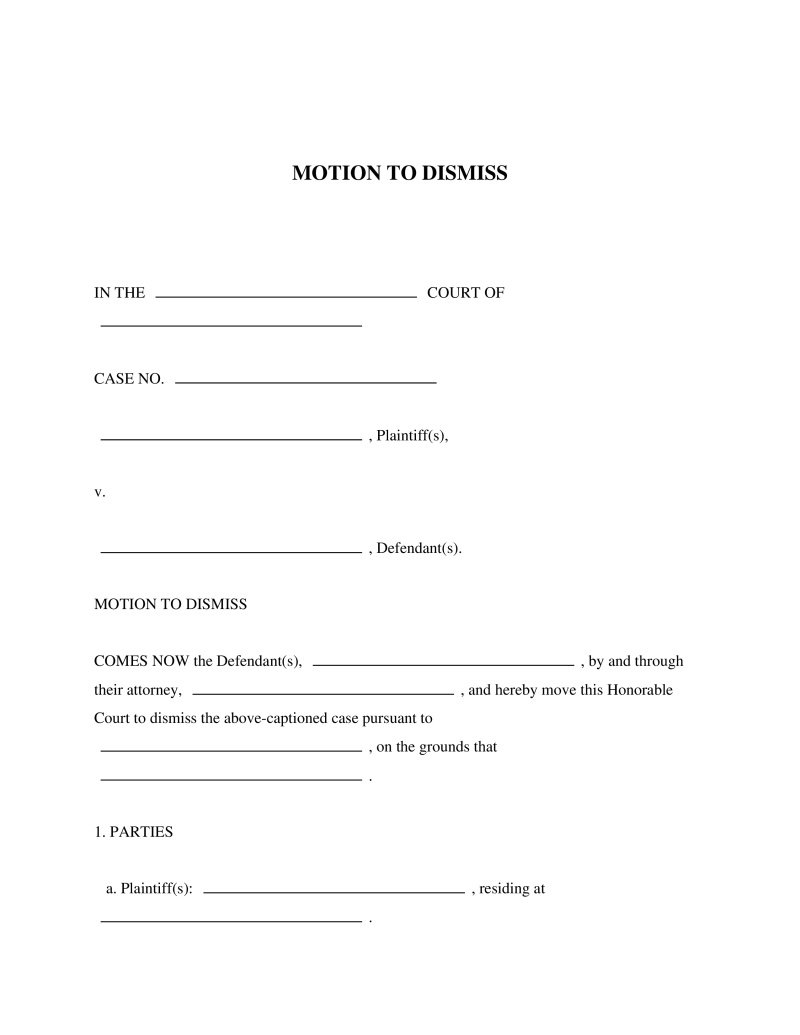A Motion to Dismiss is a legal document filed in court that requests the dismissal of a case on specified grounds.
Defendant Name
Enter the full legal name of the defendant as it appears in court documents.

Table of Contents
What is a Motion to Dismiss?
A Motion to Dismiss is a formal request made to a court, asking it to dismiss a case for specific reasons before going to trial. It serves as a critical tool in the legal defense arsenal, allowing defendants to argue that, even if all the allegations in the complaint are true, there is no legal basis for the lawsuit to proceed. This request can be based on various grounds, including but not limited to, lack of jurisdiction, improper service of process, or failure to state a claim upon which relief can be granted. Individuals or entities facing litigation may find this motion particularly beneficial as it offers an opportunity to avoid the time-consuming and costly nature of a trial by resolving legal issues at an early stage.
Key Features
Important Provisions
- Jurisdictional challenge clause, outlining reasons why the court does not have authority over the case or parties.
- Failure to state a claim provision, detailing why the allegations do not amount to a legally actionable offense.
- Service of process section, specifying any deficiencies in how the lawsuit was delivered or notified.
- Statute of limitations argument, asserting that too much time has elapsed for the lawsuit to proceed.
Pros and Cons
Pros
- +Potentially saves time and resources by avoiding a lengthy trial process.
- +Can significantly streamline the legal defense strategy when successful.
- +Allows defendants to challenge the sufficiency of the plaintiff's claims early in litigation.
- +Helps clarify legal issues and focus subsequent legal arguments if the case continues.
- +Provides an opportunity for dismissal based on procedural errors without addressing the merits of the case.
Cons
- -Not guaranteed success; judges have discretion in granting these motions.
- -If unsuccessful, it might provide the plaintiff an opportunity to amend their complaint.
- -Requires precise legal knowledge and adherence to procedural rules which may be challenging without professional legal assistance.
Common Uses
- To argue that the court lacks jurisdiction over the subject matter or parties involved.
- When asserting that the plaintiff has failed to state a claim upon which relief can be granted.
- To challenge improper service of process that fails to meet statutory requirements.
- For asserting that there has been a violation of statutes of limitations rendering claims untimely.
- To contend that the complaint fails to allege facts sufficient to constitute a cause of action.
- In cases where there exist defects in pleading that cannot be cured by an amendment.
Frequently Asked Questions
Do you have a question about a Motion to Dismiss?
Example questions:
Not the form you're looking for?
Try our legal document generator to create a custom document
Community Discussion
Share your experience and help others
Legal Notice: Comments are personal opinions and do not constitute legal advice. Always consult a qualified attorney for matters specific to your situation.
Comments (0)
Leave a Comment
No comments yet. Be the first to comment!